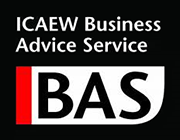Updated: 8th May 2020
Analysing the Fall of Thomas Cook
With three profit warnings issued this year, coupled with a rapidly dwindling share price, the clouds have been gathering over Thomas Cook for some time.
After failing to raise a required £200m investment to secure its future, and with no chance of rescue, the beleaguered travel firm effectively ceased to exist on Monday morning as it was announced the company had entered compulsory liquidation after 178 years in business. What follows now is a huge repatriation effort with over 150,000 Thomas Cook customers stranded abroad at the time of the company’s collapse.
While the reasons behind Thomas Cook’s failure have been blamed on a multitude of factors ranging from Brexit uncertainty and the associated fall in the value of the pound, an out of date business model which was reliant on brochures and a high street presence, through to the fact that ownership of its fleet of planes meant high costs were incurred all year round, it is likely that all of these factors, and more, were at least partially to blame for the company’s unfortunate demise.
While the eventual closure of Thomas Cook was not unexpected in itself, what may have been surprising to some is the route the travel giant took when it came to entering into a formal insolvency process. There are a variety of insolvency options open to ailing businesses; two of the most commonly utilised are liquidation and administration.
Liquidation vs Administration: What is the difference?
While liquidation and administration are both formal insolvency procedures, they are in fact extremely different processes with opposing motivations behind each of them.
When a company enters administration this is often done with hopes of rescuing the company, or at least a part of it, as a going concern. Even if rescue doesn’t appear to be a likely option, administration is typically the preferred process for larger companies, such as Thomas Cook, as this often paves the way for maximum returns to be distributed to creditors as opposed to what would be realised through a break-up sale of assets in liquidation.
Liquidation is a terminal process which brings about the end of a company with no chance of rescue. It is used when the underlying business is simply not viable and the company’s affairs need to be wound up. The liquidation of an insolvent company can be both voluntary – initiated by the company’s directors and/or shareholders – or compulsory, where the court steps in to wind up the business and its affairs. During a liquidation, the liquidator has limited powers to trade (if at all) meaning an administration is normally the preferred option in the case of live companies.
So why did Thomas Cook opt for liquidation?
For a company of its size, administration may have been the expected route; however, an application was made to the UK High Court, forcing Thomas Cook Group plc and its associated companies into compulsory liquidation and resulting in the immediate cessation of business.
Although creditors petitioning the court is by far the most common catalyst to compulsory liquidation, a number of parties are able to apply to court for a winding up petition. In this case the Thomas Cook board were the ones who made the application to court.





